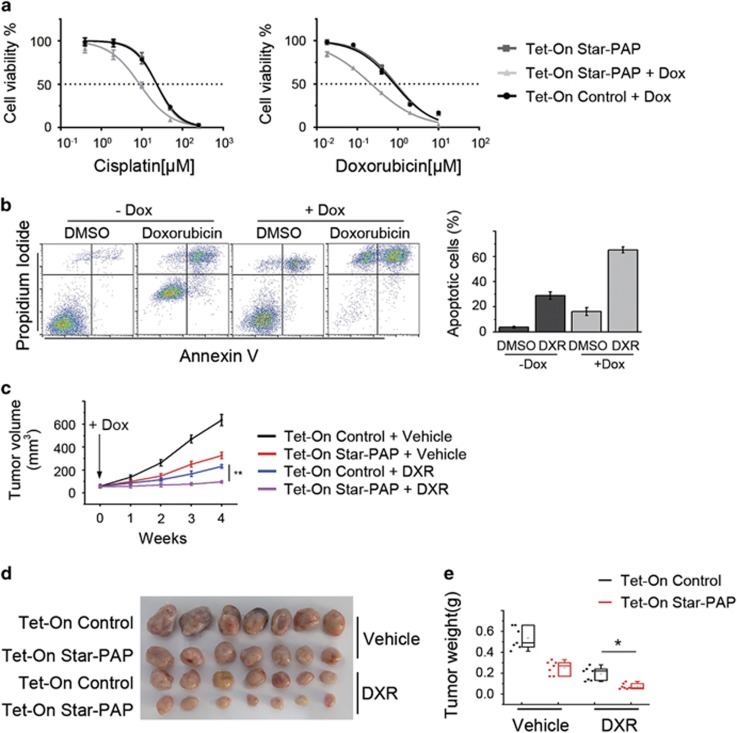Figure 5.
Star-PAP sensitizes breast cancer cells to chemotherapy drugs. (a) Dose–response curves of Tet-On Star-PAP cells treated with cisplatin (left panel) and doxorubicin (right panel). Cell viability was measured by MTS assay; n=6, error bar denotes S.D. (b) Apoptosis of Tet-On Star-PAP cells treated with 1 μM doxorubicin was analyzed in the absence or presence of doxycycline (left panel). Data from triplicate experiments are presented as mean±S.D. (right panel). (c) The same amount of Tet-On control and Star-PAP cells were incubated into the left and right mammary fat pad of NOD/SCID mice, respectively. Mice bearing xenografts were separated into two groups and treated with vehicle or doxorubicin, and diet containing doxycycline was supplied along with treatment. Tumor volume was measured weekly and presented as mean±S.D.; n=8, **P<0.01. (d) Image of representative xenografts is shown. (e) Box plot shows tumor weight. Data were presented as mean±S.D.; n=8. Dox, doxycycline; DXR, doxorubicin. *P<0.05

